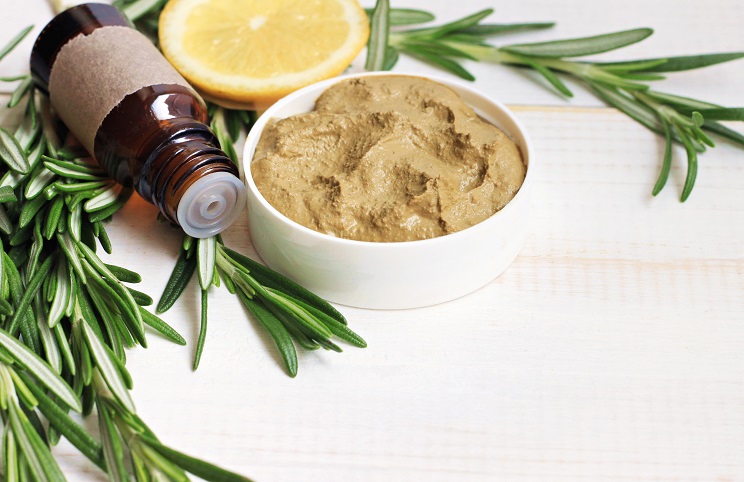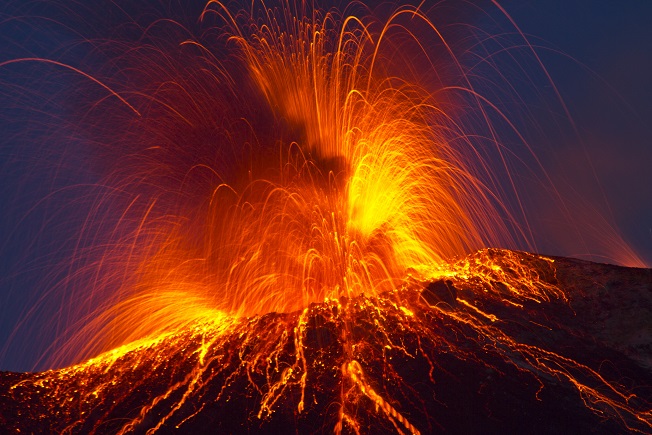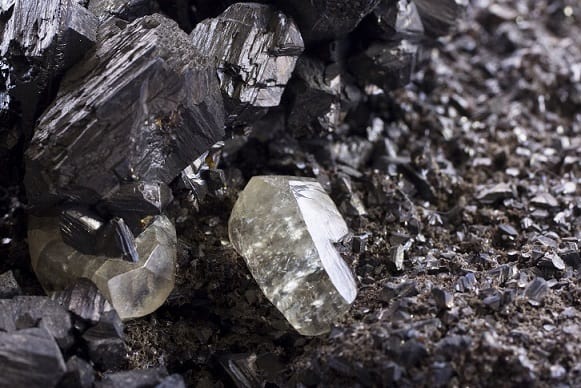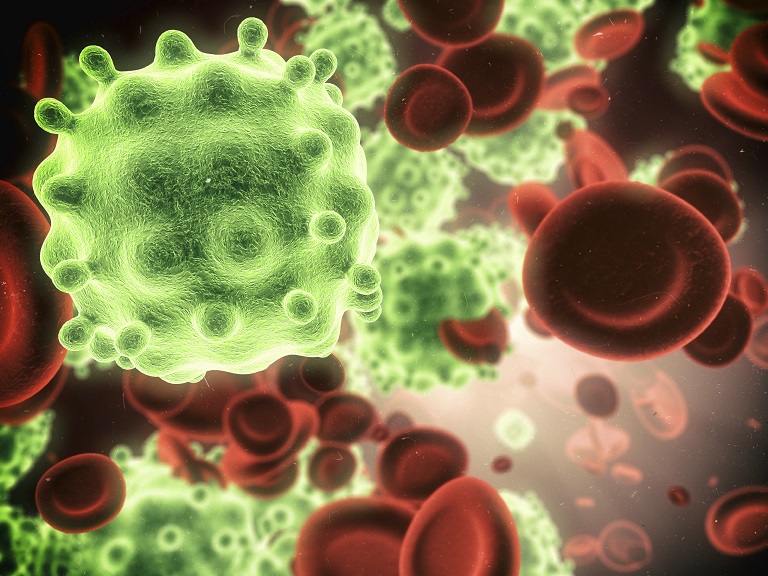 Bentonite clay, also known as montmorillonite or “the mineral with 1000 uses”, might be the acne topical treatment with the most interesting origin.
Bentonite clay, also known as montmorillonite or “the mineral with 1000 uses”, might be the acne topical treatment with the most interesting origin.
Essentially, this remedy is mined from the rocks of altered volcanic ash beds, the hardened layers of countless volcanic eruptions through the ages. The bentonite is born during the rapid cooling of magma after it leaves the Earth’s crust and blasts high into the atmosphere.
There, it solidifies and morphs into solids and glassy particles. The base of bentonite is born, featuring 75 different trace minerals.
Originally, bentonite was named after Fort Benton in Wyoming, when Wilbur C Knight discovered the largest bentonite mine in the known world in 1898. Since then, most bentonite clay has been used for industrial purposes like waterproofing surfaces in construction, oil drilling, well-filling and removing the cloudiness in wine making.
At some point though, bentonite gained massive popularity as a facial mask to kill acne; if you’ve heard of women using grey coloured clay masks, bentonite clay is the popular choice. The acne cleanser Clearasil contains bentonite for absorbing excess sebum and unclogging skin pores, as do several other brands. There’s three types, starting with calcium bentonite, the form taken orally by tribes and ancient civilisations around the world. Another is potassium bentonite, and sodium bentonite is the face mask variety, green or grey and ultra fine.
The whole idea of bentonite clay forming in the fires of the earth’s crust has an appeal to it. It instantly suggest a massive, ancient power, preferably for clearing acne.
But what does the science say – is bentonite clay the real deal, or just a clever web of marketing deceit?
The bentonite clay theories
 The predominant theory behind bentonite clay’s acne powers and its supplemental powers is its detoxification properties.
The predominant theory behind bentonite clay’s acne powers and its supplemental powers is its detoxification properties.
It’s said that when bentonite clay comes into contact with any fluid, its electrical components change. It gains a strong negative charge, and supposedly, all toxins have strong positive charges. Consequently, they are attracted into the clay like a magnet, via electrical attraction. The molecular bonds of the toxin are then broken down, releasing the minerals within for the body to use.
One stone-cold undisputed fact about bentonite clay is that it swells massively (up to 20 times its normal size) when exposed to water, becoming porous; bentonite is used in construction to seal old wells and ponds for that reason. The theory states that through magnetic attraction, toxins are sucked into this now porous sponge through “adsorption”, becoming bound, trapped and doomed.
Read Annihilate Your Acne – get the ultimate diet for clear and glowing skin!
The relevance to acne? You might have heard that toxic chemicals and heavy metals in cosmetics, cleaning items and tap water are completely out of control. BPA in water pipes, triclosan in toothpaste, mercury in tuna – the list goes on. 99% of all Americans have plastic-based chemicals called phthalates in their body, for example.
The disputed part is that these toxins are accumulating rapidly in our skin cells, causing inflammation and oxidative stress that leads to acne. By sucking them out using the forces of electrical attraction, bentonite clay can apparently remove their evil influence and make for a highly unique topical treatment.
The second main theory is that bentonite clay is highly alkaline, and can sooth inflammation and acidity.
The bentonite clay reality
Sounds great right? Unfortunately, there’s a problem with the evidence – it doesn’t exist. Heavy metals and chemicals are a massive problem in multiple ways, but their deadliest actions happen inside the body. They can 1) deplete the antioxidant glutathione during their detoxification, 2) systematically increase inflammation, 3) increase blood free radicals, and 4) do a lot more.
Toxins trapped in the skin can pile on local inflammation and oxidative stress, but the chances of getting gloriously clear skin just by “adsorbing” the BPA using bentonite clay are extremely slim.
What’s more, the detoxification has some truth to it – bentonite clay can absorb and detoxify aflatoxins in the digestive tract (study, study), a mould-born mycotoxin found on poor quality peanuts. But it’s unknown whether the negative charge is strong enough to extract virtually every known toxin like the widely accepted facts circulating the internet claim.
Read the eBook: learn why common vegetable oils are an acne nightmare
All heavy metals are positively charged, like mercury and aluminium, but for the chemicals, the rule isn’t uniform. Phthalates from plastic have a negative charge, and they’re the chief acne-causing chemical of make-up, applied every day.
The heavy metal aluminium is also found in make-up, so this time bentonite clay will succeed. But mercury, arsenic, and cadmium are found in foods, like tuna, fruit juice, and pesticide-drenched fruit respectively. They won’t be concentrated in the face.
Is bentonite clay soothing and alkaline?
The alkaline theory is another faulty one. A PH of 8-9.7, the natural range of bentonite clay, is a disaster for your skin. Human skin has a naturally acidic PH of 4-4.5, increasing slightly as you age into adulthood due to a decreased need for a firewall against viruses.
The problem is that a wide section of alternative health people believe that everything alkaline is evil. There’s a whole acid-alkaline theory of health where nearly every ailment whether it’s cancer, diabetes or Alzheimer’s is caused by excessive acid in the body.
Too much acidity can wreak your teeth and fizzle away your joints, but your skin cells are one place when you need healthy acidity. Applying bentonite clay would result in dryness, irritation, and the biggest symptom associated with alkaline treatments like baking soda – severe damage to the skin barrier.
Is bentonite clay the greatest weapon against oily skin ever?
Next we have a correct theory, but in the wrong way – that bentonite clay is excellent for oily skin.
We return to bentonite’s large absorption capacity. When mixed with water and left to expand, bentonite clay can literally suck excess sebum off of your face, and potentially right out of the pores.
Unlike the toxin theory, this one has evidence going back 30 years. In 1982, scientists wanted to analyse rates of normal sebum production after excess sebum had been removed. They applied an oil-reducing substance to 2.5cm squared areas of 3 test subjects’ faces for 3 hour intervals over 24 hours, but what was this substance?
Important article – the top 6 vitamins and minerals for clearing acne
Maybe you guessed it – bentonite clay. Clearly, scientists already knew that bentonite clay was fantastic for oily skin back in 1980s. Bentonite clay wasn’t specifically being examined; it was simply a tool they were using for analysis. It clearly reduces sebum with utmost reliability.
A 1985 study on children performed the exact same experiment. This ancient volcanic rock formation from the earth’s crust could be a pore-unclogging extraordinaire.
The problem is that it’s too effective. Check out these testimonials from random acne patients:
- “I tried it as a face mask and all it did was dry me out”.
- “Bentonite clay dries my face out to the point that it hurts”.
- “Bentonite is extremely drying, more than any topical treatment I have used in my lifetime”.
- “Bentonite sticks to my face really tightly and trying to wash this stuff off is hard”.
- “When I washed the bentonite off, my face was extremely dry”.
There’s positive testimonials as well, with one claiming “amazing results” within weeks, but the story of skin becoming as dry as sandpaper is everywhere. Not only will that that steal your skin’s aesthetics by sucking the life out of it and creating white flaky patches, but in the long term, your skin could get more oily.
Why? Sebum is not some evolutionary leftover which simply exists to clog pores – it’s a lubrication agent, and nutrient delivery service. If your skin has dried up far beyond what’s necessary, then your sebaceous glands go into overdrive to replenish the lost supplies.
Is bentonite clay rich in skin-clearing minerals?
 Another misleading theory is the treasure trove of 75 minerals from the earth’s mantle which everyone gets hyped up about. The facts are true, and in descending order, the most abundant minerals are silica, aluminium silica, sodium chloride, potassium, and calcium. There’s tons of rare ones like scandium, cesium, and renium.
Another misleading theory is the treasure trove of 75 minerals from the earth’s mantle which everyone gets hyped up about. The facts are true, and in descending order, the most abundant minerals are silica, aluminium silica, sodium chloride, potassium, and calcium. There’s tons of rare ones like scandium, cesium, and renium.
But like the toxins theory, minerals are far more effective against acne when INSIDE the body. Zinc, for instance, constrains your entire immune system. Magnesium and selenium are used to manufacture glutathione and will have minimal benefit when applied to the face.
For instance, there’s a topical cream called selenium sulphide which gets rave reviews, but it’s actually the sulphide portion which helps acne, by massacring p.acnes bacteria. Popular topical zinc creams have been compared to placebos in studies and found to be no more effective. Others have added zinc to antibiotic creams to no avail. Yet zinc is an amazing internal supplement that can slash acne counts by 49.8%.
These minerals will have minor indirect benefits. After all, they are essential nutrients contained in all healthy skin. But you’d do better to dunk your head in a giant vat of pomegranate juice, easily, because vitamins and antioxidants are the real topical heroes. This is down to their antioxidant functioning; your epidermis has armours of both vitamin E and vitamin A to protect against sunlight, air pollution and other free radical sources.
Why vitamin C is the acne nutrient you cannot ignore
Countless minor antioxidants like resveratrol in grapes and anthocyanins in berries can be incorporated into skin cells, providing extra defences. That’s why topical treatments like aloe vera, witch hazel, or even a cheap old orange peel can slash acne.
Topical minerals are only useful when they’re designed to be absorbed into the entire bloodstream transdermally, like with the ancient minerals magnesium supplement that I recommend.
Bentonite clay has decent antibacterial powers
 However, bentonite clay isn’t beyond redemption – it has at least one interesting power in the realm of skincare.
However, bentonite clay isn’t beyond redemption – it has at least one interesting power in the realm of skincare.
This 2007 study from Arizona State University tested forms of bentonite clay against several bacterial species, including s.aureus, e.coli, m.marianum, and salmonella. The bacterial cultures without added clay grew over 1000 times faster, and they stated that the bentonite clay “exhibits bactericidal activity”. P.acnes bacteria wasn’t included, but this is promising nevertheless.
By 2009. research had progressed enough to write a massive review with loads of interesting facts. They began by claiming that “some bentonites offer distinct antibacterial properties”. Then they detailed a study on a green-coloured French bentonite called a “healing clay”, which eradicated a bacterial skin infection called a Buruli ulcer.
Then things got real. Clays can either be hydrophilic, where they attract water, or organophillic, where they attract organic substances. The organophillic clays apparently killed bacteria by attracting the cell towards the clay with such extreme force that the cell membrane was torn apart, causing a catastrophic leakage of cytoplasm and then death.
Bentonite clay can thus wipe out bacteria physically, although there was no sign of another physical method examined – when clay crystals orient around the bacteria and suffocate it.
Chemical antibacterial properties were also observed, theorised to be from 1) poisoning the bacteria, or 2) depriving it of nutrients. Interestingly, water seemed to activate the antibacterial properties, as applying dry clay to E. coli achieved zero inhibition. When the clay was mixed with water, a broad spectrum of bacteria was killed after 24 hours.
In short, there’s a moderate chance that bentonite clay will wipe out p.acnes bacteria and the immune system inflammation it triggers. This could account for the benefits which several acne patients have seen.
Bentonite clearly has some value, because it shows up in the history books frequently. There’s reports of bentonite clay being found in paint caves from the Homo erectus era 1.9 million to 70,000 years ago, and in old Neanderthal man sites, said to have been used for treating wounds. Aboriginal peoples often eat clay for health, and the Pharaoh’s physicians in Ancient Egypt used bentonite clay as an anti-inflammatory agent. The use of clay is as old as mankind itself.
Important article – the top 7 natural topical treatments for acne
That said, some bentonite clays achieved nothing; they were merely hydrophilic, attracting water. Others actually increased bacterial growth, and the dangers of drying out your skin still stand. It’s difficult to predict what each individual clay will do, because according to the scientists, bentonites that led to “growth enhancement” were mineralogically similar to the others.
Because of killing bacteria, a bentonite clay mask has a tiny chance of succeeding.
Conclusion
Overall though, using a bentonite clay mask for natural skincare is a complete waste of time. Despite coming from the fires of the earth’s core or not, this ancient ash deposit is a highly overrated acne treatment.
To treat oily skin, you can start with vitamin A and lowering insulin. For a topical treatment against sebum, you can use green tea. The antibacterial benefits of bentonite clay are decent, but too weak to counteract the dangers of alkalinity and extreme dryness.
Plus, the mask usually dries and glues to your face way too efficiently. Removing the clay cleanly is almost impossible, leading to irritation and worse looking skin in the first place. There’s also the sheer inconvenience of it – who wants to walk around with a grey or green face mask on all day?
Raw honey is far simpler, you can apply a tiny amount in five seconds flat, and walk the streets without looking like an alien, as long as it’s not an extremely dark coloured variety. Raw honey also lacks any side effects, apart from a small risk of a bee allergy and the resulting inflammation.
Say no to bentonite clay. If your goal is to banish p.acnes bacteria from your pores using a natural topical treatment, choose raw honey, grapeseed oil, royal jelly, or tea tree oil any time.
NEXT: learn the root causes of acne, clear your skin permanently
Thanks for reading!
Hello,
Thanks for the article..just wondering whether other clays are good for acne, eg. French clay, rhassoul clay? Also, does activated charcoal help draw toxins out of the skin?